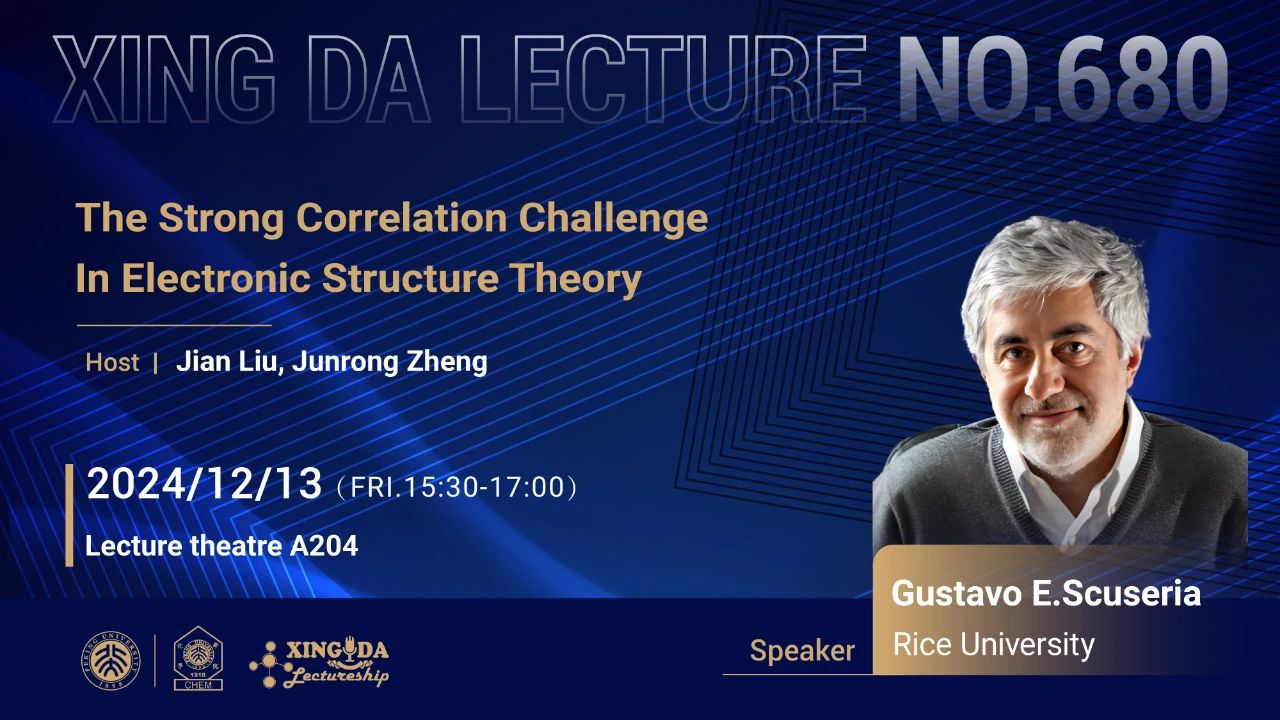
Biography
Prof. Gustavo E. Scuseria is the Robert A. Welch Professor of Chemistry, Professor of Physics and Astronomy, and Professor of Materials Science and NanoEngineering at Rice University in Houston, Texas, USA. He received his Ph.D. from the University of Buenos Aires in 1983. He was a postdoctoral researcher at the University of California, Berkeley, and the University of Georgia before joining the faculty at Rice in 1989.Hismain research field iscomputational quantum chemistry, where he has pioneered novel methodologies and their application to molecules, solids, and nanostructures. His contributions to coupled cluster and density functional theories are widely recognized in the literature. In the last 15 years, his research has focused on the strong correlation challenge in electronic structure theory, where he has advocated mixing symmetry projection methods with coupled cluster theory and, more recently, using dualities for taming strong correlations. Research in the Scuseria group straddles between quantum chemistry, condensed matter physics, and materials science, focusing on novel methods for electronic structure theory, particularly strong correlation.
Abstact
The Strong Correlation Challenge in Electronic Structure Theory
Quantum Chemistry is a mature field. Progress in the last 50 years has been fantastic. Coupled cluster and density functional theories have conquered the weak correlation problem, but strong correlation remains pervasive and problematic. This obstacle hinders many practical applications relevant to catalysis, photochemistry, magnetic phenomena, and transition metal chemistry, to name a few. Of course, it is not surprising that after almost 100 years of the Schrodinger equation, only the most difficult problems are left. In the past decade, my research group has focused on strong electron correlation, and in this talk, I will discuss our recent efforts to tackle it. I will first describe combinations of coupled cluster and symmetry projection theories that are quite successful for finite systems. I will then present a novel idea using dualities that convert strongly correlated systems into weakly correlated ones. I will finally show proof of principle applications of this theory to spin systems and the Hubbard model, where the interaction strength can be easily tuned and encompass interesting physics.